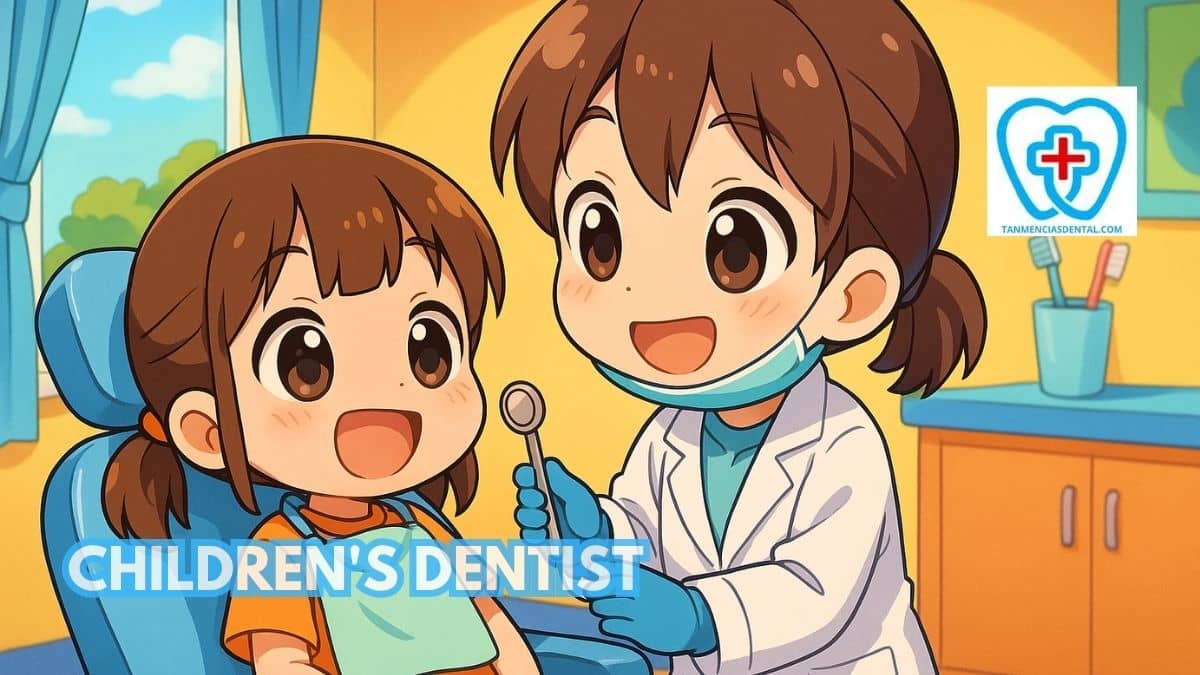A children’s dentist focuses on providing care in a way that reduces fear and creates a sense of safety for young patients.
Their approach is different from general dentistry because it is tailored to the needs of children at various stages of development.
Many children feel nervous when visiting the dentist, so creating a calm and supportive atmosphere is important.
These dentists use special techniques to help children feel comfortable while still delivering thorough care.
We’ll explain how a children’s dentist makes each visit a positive and stress-free experience.
1. Welcoming And Colorful Dental Environment
Children’s dentists design their offices to be cheerful and inviting, often using bright colors, murals, and themed decorations.
This visual appeal makes the space feel less like a medical office and more like a friendly place.
Waiting areas may have books, puzzles, and interactive games to hold a child’s attention while they wait.
Some offices even play gentle background music to add to the relaxed mood.
The goal is to help children feel at ease before they even meet the dentist.
🦷 Fresh Breath Without Toothpaste: Simple Ways to Clean Your Teeth and Smile With Confidence
2. Early Dental Visit Familiarization
Introducing children to dental care during their first visit helps them feel more comfortable in a dental setting.
A pediatric dentist can use this opportunity to explain the process in simple terms that match the child’s age and understanding.
These early experiences are important because they reduce nervousness and make future appointments easier to handle.
The first visit also gives the dentist a chance to examine the child’s teeth and gums to check overall oral health.
Parents can receive advice on preventive care, such as proper brushing techniques and healthy eating habits to protect teeth.
Regular visits from an early age allow the dentist to monitor growth and spot any signs of tooth decay before they become serious problems.
In pediatric dentistry, building a routine of visits encourages children to see dental care as a normal part of life.
This familiarization also helps parents feel more confident about their child’s oral health plan.
Over time, these positive early experiences set the foundation for a lifetime of healthy smiles.
🦷 Beyond the Brush: Smart Alternatives for Cleaning Teeth Without Brushing
3. Gentle, Age-Appropriate Communication
A children’s dentist uses language that is easy for children to understand.
They might compare dental tools to everyday objects to make them less intimidating.
Instead of using complex medical terms, they explain treatments in a way that is accurate but not frightening.
They also pay close attention to tone and pace, speaking in a calm and friendly manner.
This communication style builds trust and reduces uncertainty for the child.
🦷 Can Gingivitis Spread? What You Should Know About Passing It to Others
4. Tell-Show-Do Explanation Method
This method helps children know exactly what to expect during their visit.
First, the dentist tells the child what they will do in simple terms.
Next, they show the tool or action, sometimes letting the child touch or hold the instrument.
Finally, they perform the procedure gently while checking the child’s comfort.
This step-by-step approach creates a sense of control and lessens the fear of the unknown.
🦷 Are You Brushing Too Hard? Why It Could Be Hurting Your Teeth and Gums
5. Parental Preparation And Role-Playing
Parents can help children feel ready for their appointment by practicing at home.
Role-playing allows the child to pretend to be the patient while a parent explains what will happen.
The children’s dentist may offer parents ideas for making this practice playful and informative.
Preparing in this way makes the real visit more familiar and less overwhelming.
It also gives children a chance to ask questions and express concerns beforehand.
🦷 Eating After Brushing: How Long Should You Wait?
6. Bringing Comfort Items From Home
Familiar objects can help a child feel more secure when visiting a dental clinic for the first time.
A favorite stuffed animal, blanket, or small toy can give a sense of comfort while sitting in the dental chair.
A pediatric dentist understands that these items can make a big difference in reducing anxiety.
They often encourage children, especially those with special needs, to keep these familiar objects close during the appointment.
This can help distract the child and make it easier for the dentist to complete the checkup or treatment.
The presence of a comforting item can also help the parent feel more at ease.
This simple yet thoughtful approach creates a calmer and more positive dental experience for the child.
🦷 Finding the Right Dental Implants in Marikina: A Guide to Clinics and Specialists
7. Praise And Reward Systems
Positive feedback helps children associate dental visits with good feelings.
Dentists often praise children for sitting still, opening their mouths, or following instructions.
Some offices have small rewards such as stickers, pencils, or toy bins that children can choose from after the visit.
This creates a positive memory and increases the chance of cooperation in future appointments.
The reward is not just for the behavior, but also to acknowledge the child’s effort.
🦷 Is Gingivitis Contagious? Understanding the Risk of Spreading Gum Disease
8. Relaxation And Calming Techniques
Children’s dentists use various techniques to help children feel relaxed during treatment.
They may engage the child in light conversation or talk about subjects the child enjoys.
Some use gentle breathing exercises or ask the child to focus on a picture or toy.
Music or short videos can also help distract and calm the child.
These methods work together to reduce stress and create a smoother appointment.
🦷 Choosing the Best Floss for Gingivitis and Strong, Healthy Gums
9. Sedation Options For Anxious Children
In cases where a child is very anxious or needs a longer procedure, sedation may be an option.
Children’s dentists explain the process clearly to parents before any decision is made.
Sedation is used carefully and only when it is the safest choice for the child.
It helps the child remain calm and still, which can make the treatment quicker and more comfortable.
This option ensures that necessary dental care can be completed without causing distress.
🦷 What to Expect From the Cost of a Dental Checkup
10. Building Trust With Gentle, Consistent Care
Trust is built when a dentist is kind, patient, and predictable in their approach.
Children’s dentists remember details about their young patients, such as past concerns or preferences.
They use gentle care at each visit, so the child knows what to expect over time.
This consistency creates a sense of security and reduces fear.
A trusting relationship makes each appointment more successful for both the child and the dentist.
🦷 Well-Established Dentists in Marikina City
👨⚕️ Conclusion
Children’s dentists use many different strategies to make dental visits comfortable and stress-free.
From colorful offices to clear explanations, every detail is designed to help children feel safe.
Early familiarity, gentle communication, and thoughtful preparation all play a role.
Even options like sedation are handled with care and understanding.
These combined efforts help children grow up with healthy teeth and a positive view of dental care.
😊 Self-Promotion
If you are looking for a friendly and caring place for your dental needs, visit us at Tan-Mencias Dental Clinic.
We are located at 44 G. Del Pilar Street, Parang, Marikina City, and we are always happy to welcome you.
You can call us at 0917-145-1074, send us a message through our Facebook page, or use the contact form on our website.
Our team is ready to answer your questions and help you feel at ease about your dental care.
Come see us and enjoy a comfortable and professional dental experience.

